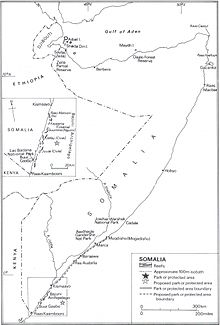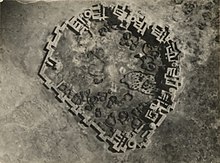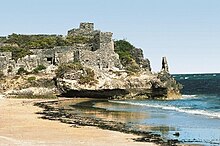History

In the pre-independence period, European explorers would occasionally travel to Somalia and other parts of the Horn of Africa to visit the region's numerous historical sites described in old documents like the 1st century CE Periplus of the Erythraean Sea .

Following Somalia's independence in 1960, the Ministry of Tourism was established in order to regulate the national tourist industry. [2] In 1969, the Law on Fauna (Hunting) and Forest Conservation was passed, which defined and provided for the establishment of controlled areas, game reserves and partial game reserves. It was later amended in 1978. [3]
Under Mire Aware Jama, [4] the Ministry subsequently passed the Tourism Act in 1984. The bill laid down official guidelines for the development and modernization of the tourism sector. Among its stated aims was the acquisition of land in the interior and on the coast as well as beach properties for the purpose of building or expanding tourist infrastructures. The Act also included provisions for "the protection, preservation and utilization of historic, cultural and artisanal resources; the protection and preservation of ecology and environment; and strict urban and regional planning for zones of touristic interest to include game parks, land and sea parks, sanctuaries, etc." The Tourism Ministry sought to center the industry in the vicinity of the southern Lag Badana National Park, with nearby coral reefs and offshore islands likewise envisioned as part of the development. Additionally, plans were drawn up for the formation of a tourist resort area on one of the beaches near the capital Mogadishu, in the south-central Banaadir region. [2]

By 1989, newer legislation was drafted governing the establishment of national parks, game reserves and special reserves. The conservation of wildlife resources was at this time overseen by the Ministry of Livestock, Forestry and Range's National Range Agency. Its Department of Wildlife also operated an independent law-enforcement unit, which had been created through a presidential decree. [3]
Following the outbreak of the civil war in 1991, tourism in Somalia came to a halt. Various international bodies subsequently began issuing travel advisories recommending that potential tourists avoid visiting the area for safety reasons. Aside from a handful of adventure seekers, few travelers ventured to the volatile southern provinces. [5] Most instead limited their visits to the relatively stable northern Somaliland territory.
After the Somali Armed Forces evicted Al-Shabaab militants from Mogadishu in mid-2011, the capital gradually started to experience a renaissance. Local businessmen and returning Somali expatriates built and opened a number of new hotels and guest houses, mainly catering to other Somalis as well as some Westerners. Newly constructed beachside resorts also accommodated the first tourist families in many years. [6] [7]






